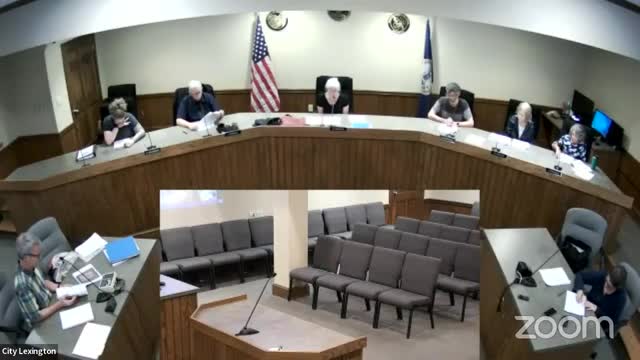Cottage housing plan sparks debate over density and zoning
August 09, 2024 | Lexington, Rockbridge County, Virginia
This article was created by AI summarizing key points discussed. AI makes mistakes, so for full details and context, please refer to the video of the full meeting. Please report any errors so we can fix them. Report an error »

During a recent government meeting, officials discussed the development of cottage housing, focusing on density regulations and lot size requirements. The conversation highlighted the need for clarity in calculating maximum cottage density, particularly in relation to existing zoning laws.
The meeting began with a review of a staff report that included a density table, which officials aimed to finalize. The discussion centered on determining whether to base density calculations on the minimum lot size for single-family homes (8,000 square feet) or for two-family dwellings (12,000 square feet). The goal is to establish a formula that would allow for a sensible number of cottages per development, with a proposed minimum of four units and a maximum of twelve.
Officials presented real-world examples to illustrate potential density outcomes. One example cited was the Railroad Cottages development in Falls Church, which consists of ten cottages on a 1.25-acre lot, averaging 1,500 square feet each. This setup results in a density of eight dwelling units per acre. Another example, the Third Street Cottages in Langley, features eight cottages on a two-thirds acre lot, averaging 850 square feet, which equates to twelve dwelling units per acre.
The meeting underscored the importance of balancing density with community building, as officials expressed a desire to avoid isolated developments. The discussion concluded with a commitment to refine the density calculations and lot size requirements, ensuring they align with the community's needs and zoning regulations.
The meeting began with a review of a staff report that included a density table, which officials aimed to finalize. The discussion centered on determining whether to base density calculations on the minimum lot size for single-family homes (8,000 square feet) or for two-family dwellings (12,000 square feet). The goal is to establish a formula that would allow for a sensible number of cottages per development, with a proposed minimum of four units and a maximum of twelve.
Officials presented real-world examples to illustrate potential density outcomes. One example cited was the Railroad Cottages development in Falls Church, which consists of ten cottages on a 1.25-acre lot, averaging 1,500 square feet each. This setup results in a density of eight dwelling units per acre. Another example, the Third Street Cottages in Langley, features eight cottages on a two-thirds acre lot, averaging 850 square feet, which equates to twelve dwelling units per acre.
The meeting underscored the importance of balancing density with community building, as officials expressed a desire to avoid isolated developments. The discussion concluded with a commitment to refine the density calculations and lot size requirements, ensuring they align with the community's needs and zoning regulations.
View full meeting
This article is based on a recent meeting—watch the full video and explore the complete transcript for deeper insights into the discussion.
View full meeting
